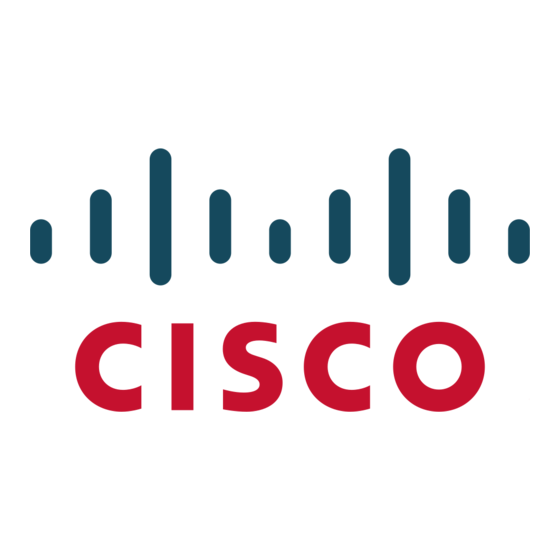Cisco AP775A - Nexus Converged Network Switch 5010 Manuale di riferimento rapido - Pagina 2
Sfoglia online o scarica il pdf Manuale di riferimento rapido per Interruttore Cisco AP775A - Nexus Converged Network Switch 5010. Cisco AP775A - Nexus Converged Network Switch 5010 14. Cisco nexus 5000 series release notes release 4.1(3)n1(1) (ol-16601-01 h0, july 2009)
Anche per Cisco AP775A - Nexus Converged Network Switch 5010: Nota di rilascio (48 pagine), Nota di rilascio (44 pagine), Nota di rilascio (26 pagine), Nota di rilascio (26 pagine)

MIBs and Network Management
S e n d d o c u m e n t a t i o n c o m m e n t s t o n x 5 0 0 0 - d o c f e e d b a c k @ c i s c o . c o m
The exchange of information between managed network switches and a robust NMS is essential for
reliable performance of a managed network. Because some switches have a limited ability to run
management software, most of the computer processing burden is assumed by the NMS. The NMS runs
the network management applications, such as Data Center Network Manager, that present management
information to network managers and other users.
In a managed switch, specialized low-impact software modules, called agents, access information about
the switch and make it available to the NMS. Managed switches maintain values for a number of
variables and report those, as required, to the NMS. For example, an agent might report such data as the
number of bytes and packets sent or received by the switch or the number of broadcast messages sent
and received. In SNMP, each of these variables is referred to as a managed object. A managed object is
anything that can be managed or anything that an agent can access and report back to the NMS. All
managed objects are contained in the MIB, which is a database of the managed objects.
An NMS can control a managed switch by sending a request to an agent of that managed switch,
requiring the switch to change the value of one or more of its variables. The managed switches can
respond to requests such as set or get. The NMS uses the set request to control the switch. The NMS
uses the get requests to monitor the switch. The set and get requests are synchronous events, which
means that the NMS initiates the activity, and the SNMP agent responds.
The managed switch can send asynchronous events, or SNMP notifications, to the NMS to inform the
NMS of some recent event. SNMP notifications (traps or informs) which are included in many MIBs,
and allow the NMS to send get requests to the managed switches less frequently.
This section includes the following topics:
•
•
•
Accessing MIB Variables Through SNMP
You can access the Cisco MIB variables through SNMP. The SNMP system consists of three parts: the
SNMP manager, the SNMP agent, and the MIB. You can compile Cisco MIBs with your network
management software. If SNMP is configured on a switch, the SNMP agent responds to MIB-related
queries sent by the NMS.
Table 1
Table 1
Operation
get-request
get-next-request
get-bulk
set-request
response
Cisco Nexus 5000 Series MIB Quick Reference
2
Accessing MIB Variables Through SNMP, page 2
SNMP Traps and Informs, page 3
Interpreting the MIB Structure, page 3
describes the SNMP operations.
SNMP Operations
Description
Retrieves a value from a specific variable.
Retrieves the value following the named variables. Often used to retrieve variables
from within a table.
2
Retrieves large blocks of data, such as multiple rows in a table, which would
otherwise require the transmission of many small blocks of data.
Stores a value in a specific variable.
Replies to the commands (get-request, get-next-request, get-bulk
set-request) sent by an NMS and to the informs sent by an agent.
1
3
, and
OL-16784-01
